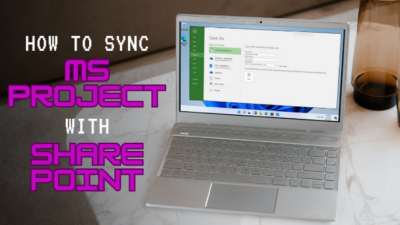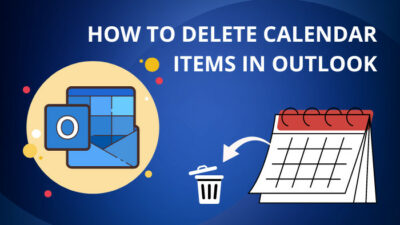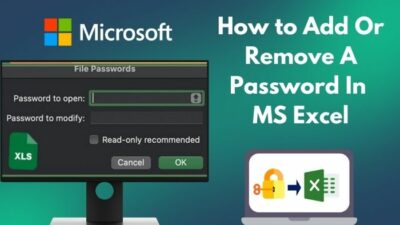Microsoft Teams is a virtual communication tool that helps people to collaborate effectively. Since it’s an ever-evolving tool with a massive arsenal of features & options, it can be a bit confusing to use, especially for newcomers to this platform.
And that’s where this article comes in. To help you pick up the pace, I’m giving you a step-by-step guide on how to use Microsoft Teams for your usual collaborative needs.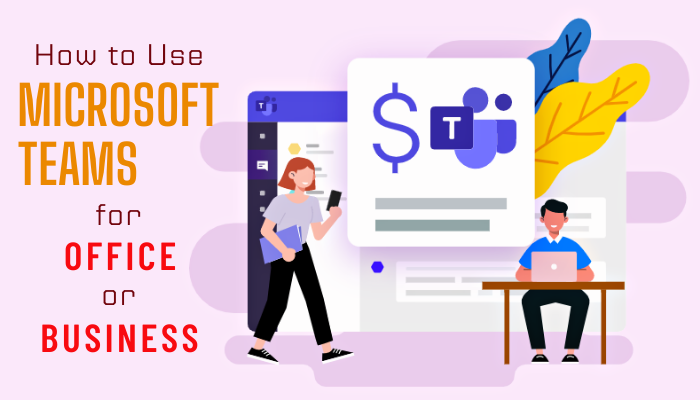
So without further ado, let’s dive in.
Get Started with Microsoft Teams
Microsoft Teams users can use either the desktop/mobile app or the web version to utilize this collaborative platform. If you want to use Teams on the web, simply go to teams.microsoft.com and sign in with your Microsoft or Office 365 account to create a Teams account.
But if you want to use the desktop/mobile app, you’d need to follow different and additional steps. No matter which platform you choose, you’ll need to have a Microsoft or Office 365 account to use Teams.
Furthermore, available features in Teams will vary depending on your subscription and account type. With that being said, let’s see how to set up Microsoft Teams on your preferred device:
Setup Microsoft Teams
- Go to Microsoft’s official website to download MS Teams and click on Download for desktop.
- Select Download Teams for home or small business if you want to use Teams for personal needs. Otherwise, select Download Teams for work or school.
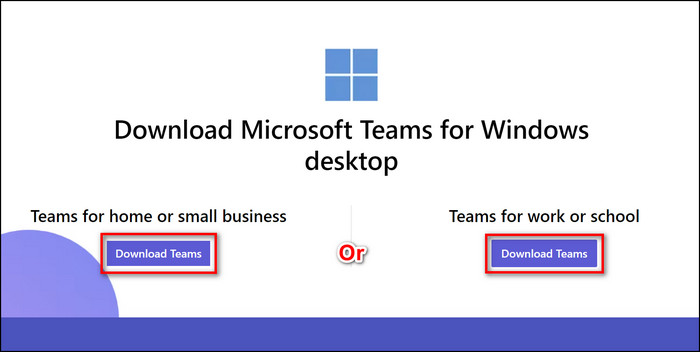
- Run the setup file and complete the installation process.
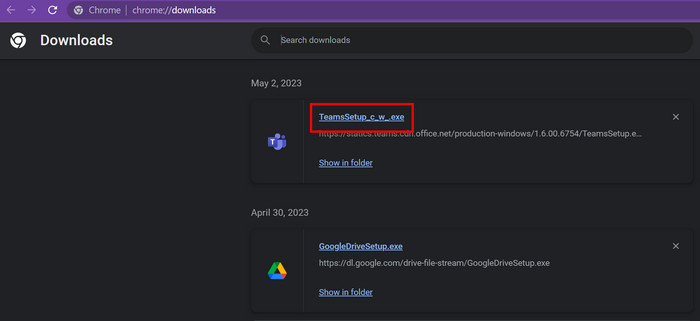
- Launch the app and click on Sign up for Teams.
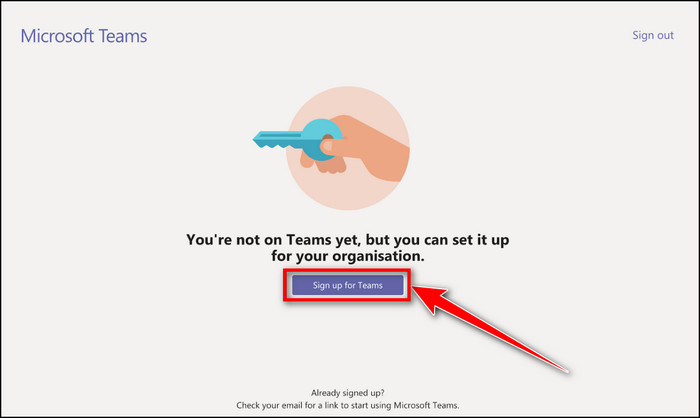
- Enter your Office 365 or Microsoft account’s email and click on Next.
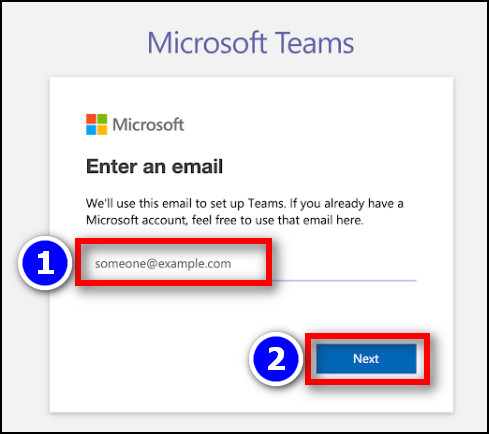
- Select your preferred option from the How do you want to use Teams? prompt and hit Next.
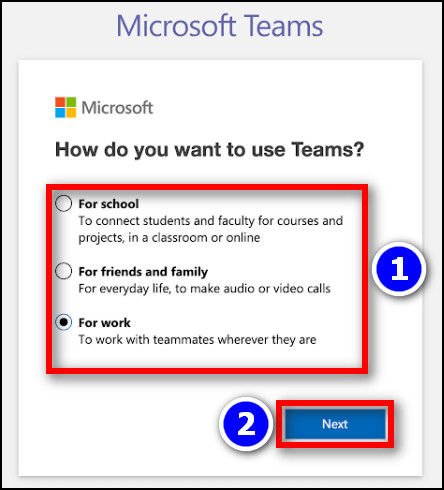
- Fill in the boxes with the necessary information and click on Set up Teams.
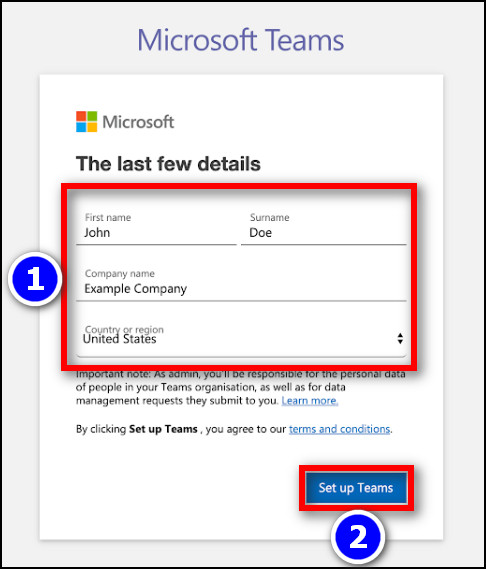
- Wait until the setup process is complete. Don’t close or reload the page.
If you want to use Teams on your iPhone/Android, open the AppStore(for iPhone users) or PlayStore(for Android users) and search for Microsoft Teams.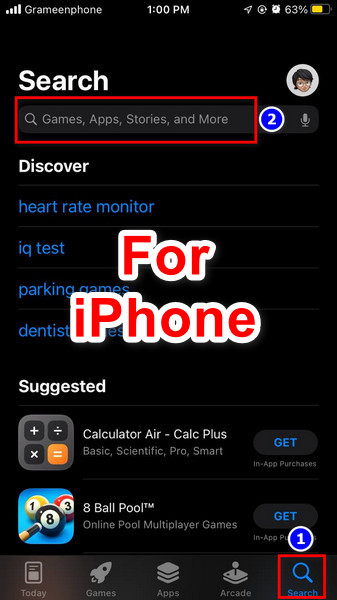
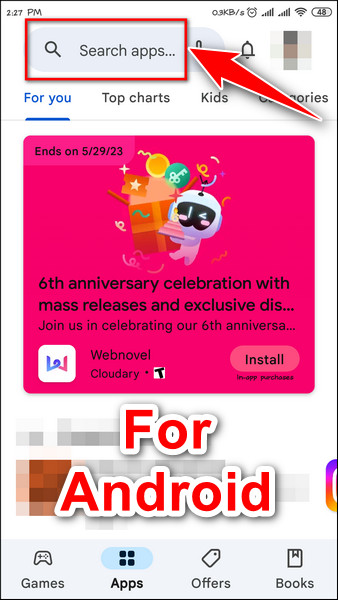
Select the correct one from the search results and tap on Get(for iPhone users) or Install(for Android users).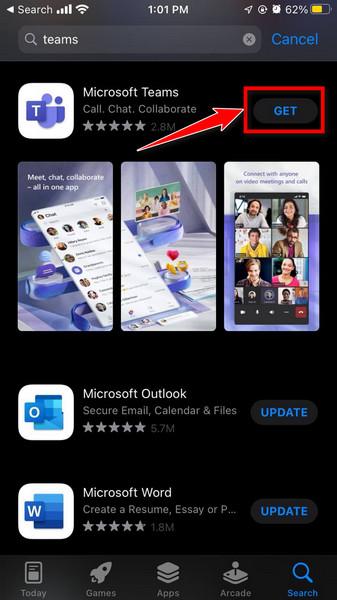
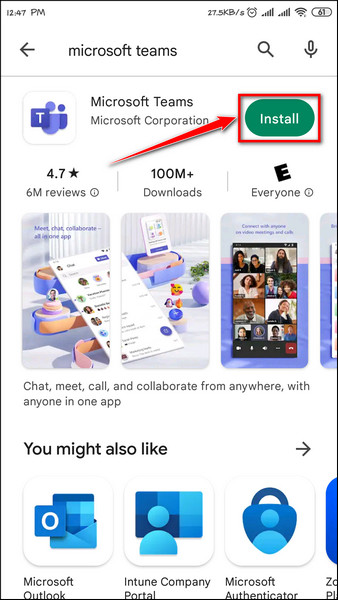
iPhone users might need to input their Apple ID password or Touch ID to verify before installation. After that, tap on Open to run the Teams app and sign in with your Office 365 or Microsoft account. Then follow the on-screen prompt to complete the process.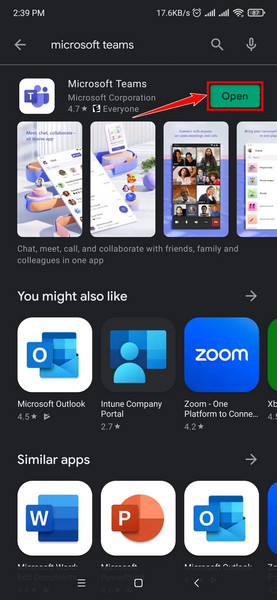
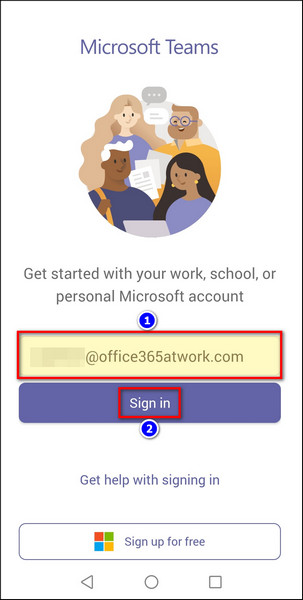
Create Teams/Channels for your Organization in Microsoft Teams(Paid Users Only)
- Run the Teams app on your PC or go to teams.microsoft.com.
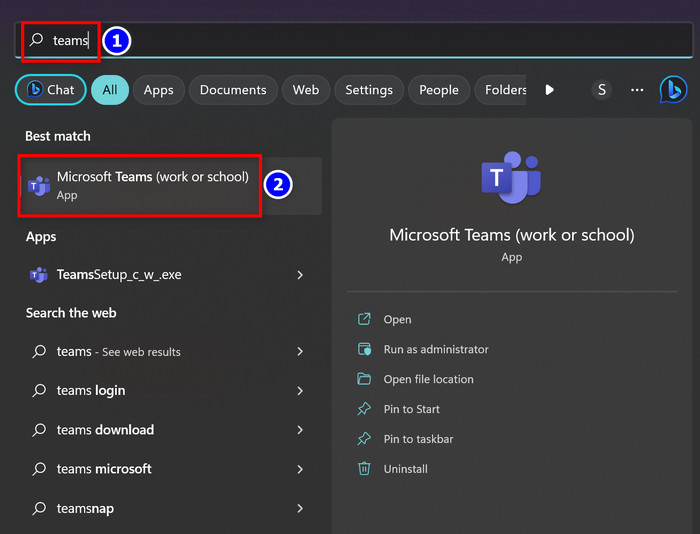
- Sign in with your organization or Office 365 Teams account.
- Select Teams from the left side pane.
- Click on Join or create a team > Create team > From scratch.
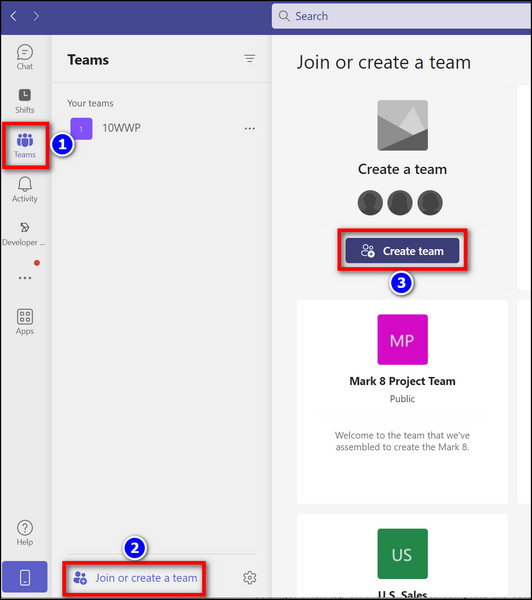
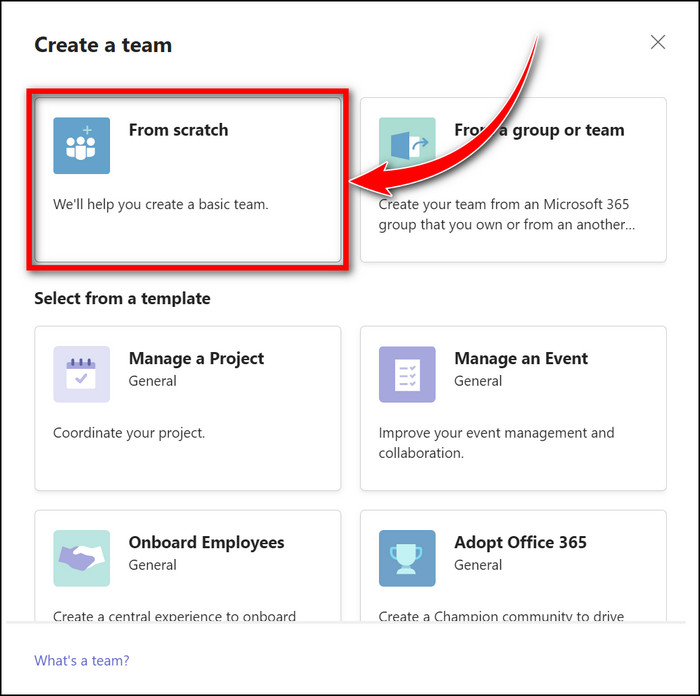
- Choose your preferred privacy setting for the team you’re making.
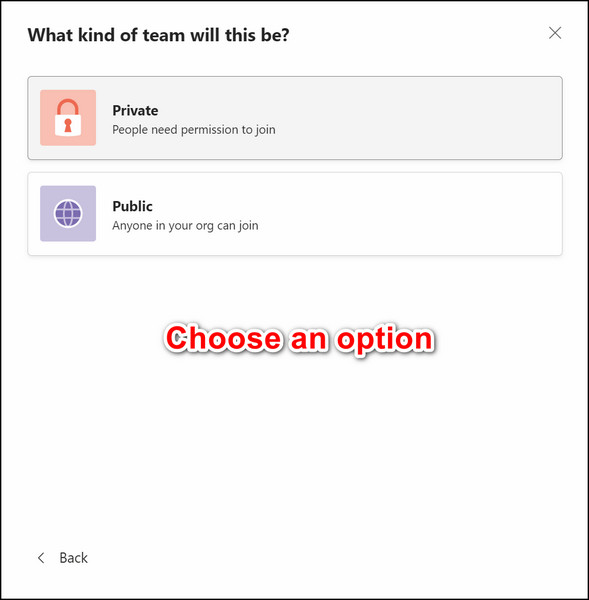
- Type the name of the group in the Team name box.
- Input a description of the team in the Description box and click on Create.
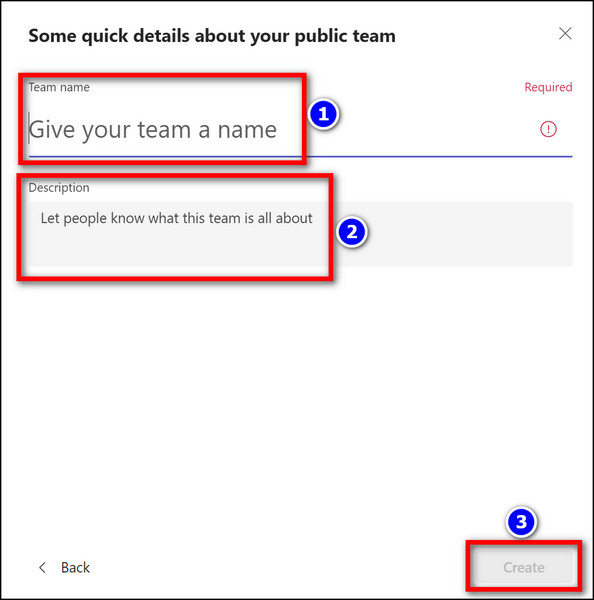
- After creating the group, click on the three-dot icon next to it.
- Select Add member.
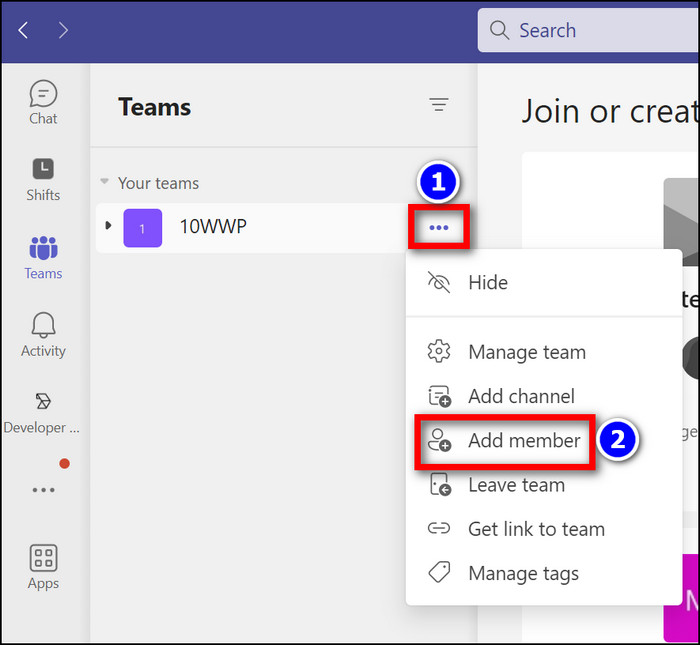
- Type the name of the members within your organization or type the mail address of the people you want to add to your team.
- Select the user you want to add and hit Add.
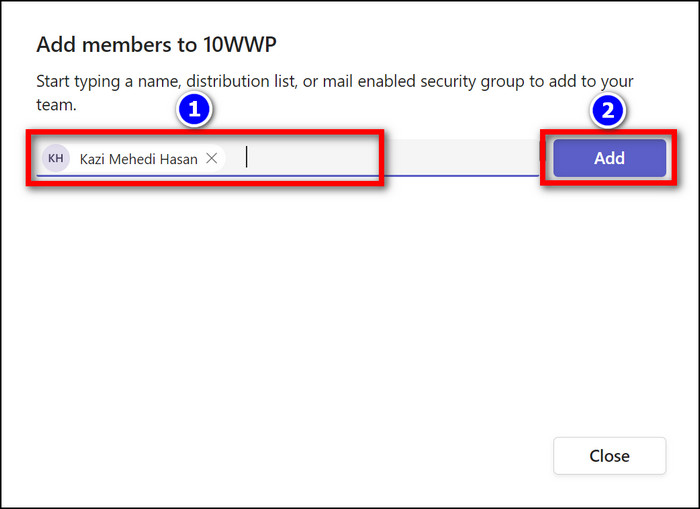
- If you want to create a custom channel, click on the three-dot icon next to your group again and select Add a channel.
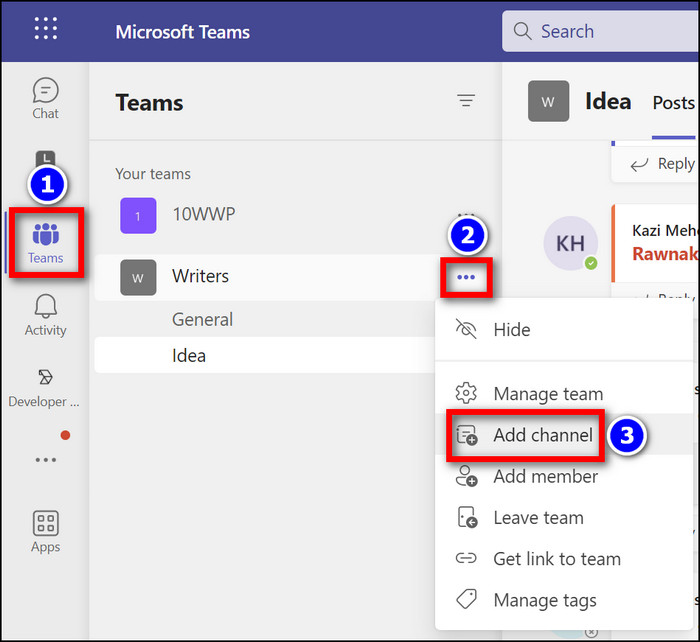
- Type the name of the channel in the Channel name box and add an optional description of the said channel in the Description(optional) box.
- Choose the channel’s privacy from the Privacy drop-down menu.
- Hit Add.
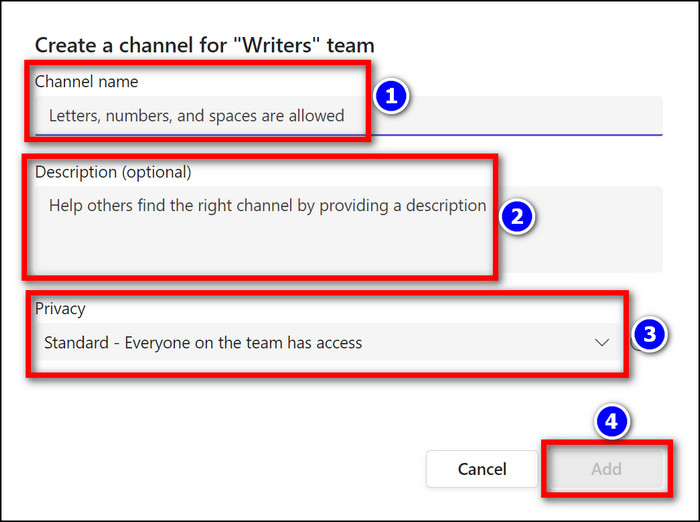
If you’re using a mobile, run the Teams app and tap on Teams. Now, click on the three-dot icon from the top left side of the screen and tap on Create new team.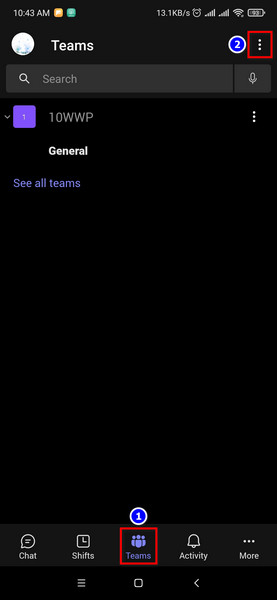
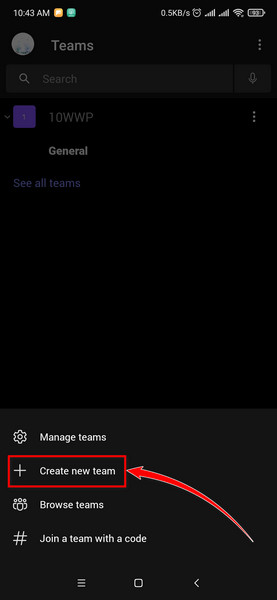 Then type your Team’s name and description, set the privacy settings, and tap on the tick icon to complete creating the team.
Then type your Team’s name and description, set the privacy settings, and tap on the tick icon to complete creating the team.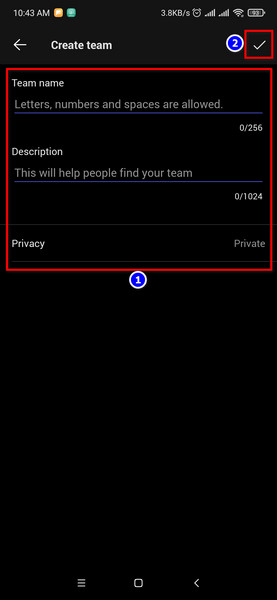
After that, tap on the three-dot icon next to the created group/team and select Manage members.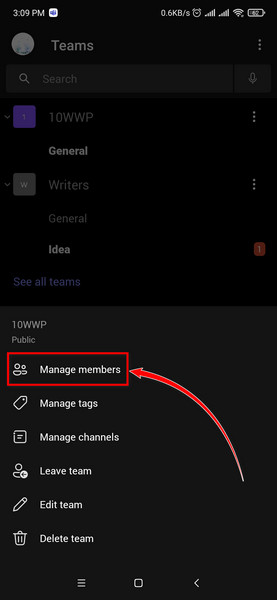 Then go to the Members tab and tap on the +(plus) icon. Type the name or mail address of the people you want to add to the group, then tap on the tick icon to finish adding members.
Then go to the Members tab and tap on the +(plus) icon. Type the name or mail address of the people you want to add to the group, then tap on the tick icon to finish adding members.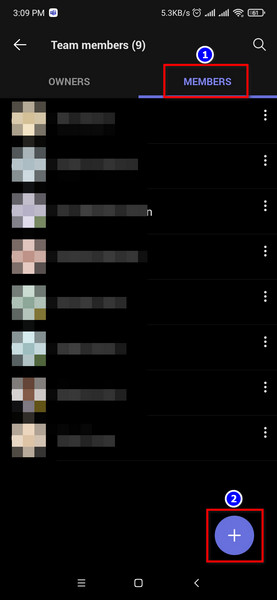
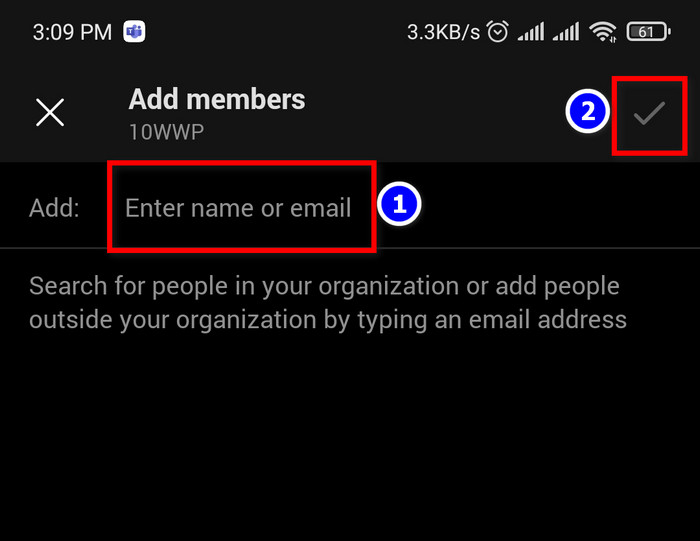
How to Start a Conversation/Chat in Microsoft Teams
After you’re done setting up the teams/channels on Microsoft Teams, you can start using its baseline features, such as starting a chat or meeting among team members, utilizing other Microsoft Office app integration, etc.
Let’s start with the one that is available for both free and paid users, Chat.
Follow these steps to start a conversation in Microsoft Teams:
- Launch the Teams app or go to Teams on the web.

- Select Chat from the left side pane and click on the New Chat icon.
- Type the name or mail address of the person with whom you want to start a conversation in the To: box.
- Select the user from the search results. You can add multiple recipients in case you want to create a group conversation. You can also set a group name by clicking on the down arrow and typing the preferred group name in its designated box.
- Click on the Type a new message box and write your message.
- Hit the Enter button to send your message and start the conversation.
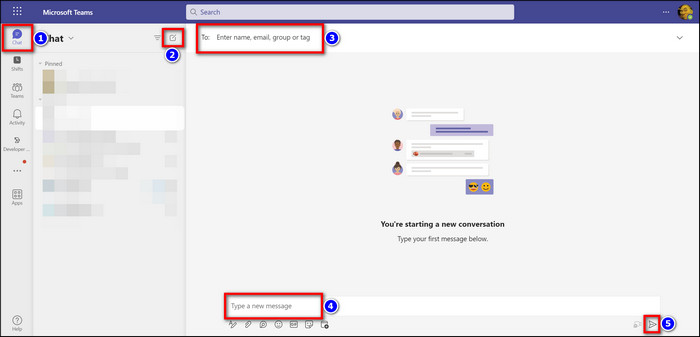
After you’ve started the conversation/chat, you can use various features, such as file sharing, adding tabs/apps, or sending emojis, GIFs, etc. Additionally, you can start a voice or video call by clicking on the Video or Phone icon from the top right corner of the screen.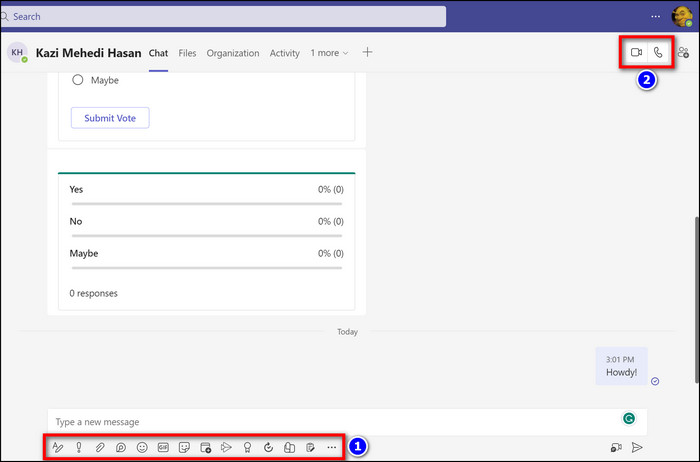
Furthermore, hover your mouse over a message and click on the three-dot icon. You’ll see a suite of options such as Reply, Edit, Delete, etc. You can also give a reaction to each message.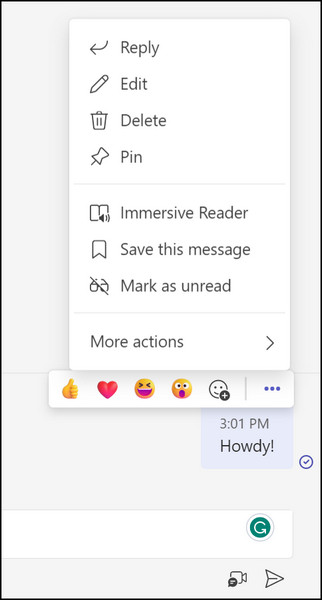
To delete a conversation, hover over the chat from the left side pane and click on the three-dot icon. Now select Delete chat > Delete. There are also options to pin, mute or hide the chat.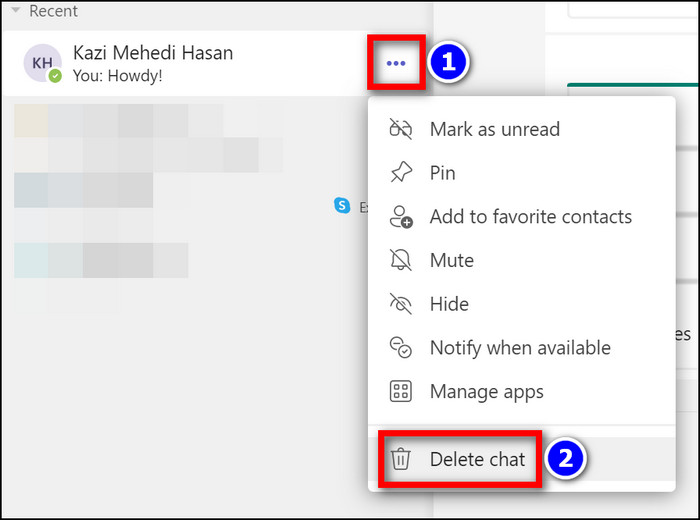
How to Use Microsoft Teams for Conferencing
One of the most used features in Microsoft Teams is teams meeting/video conferencing. A myriad of participants can join the group video call and interact with each other via a suite of features such as live chat, whiteboard drawing, live polling, etc.
Users have the option to start the meeting immediately or schedule it for later.
Here’s how you can use Microsoft Teams for meeting/conferencing:
- Run the Teams app on your computer or go to teams.microsoft.com.

- Select Teams from the left side pane and choose the group/channel where you want to start a video conference.
- Click on the drop-down menu for Meet.
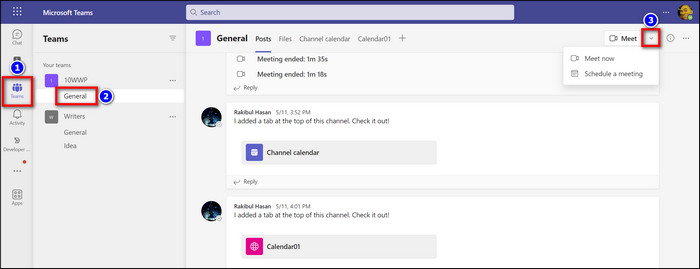
- Either choose Meet now to start a meeting immediately or Schedule a meeting to start the meeting at a later time.
- In case you choose Meet now:
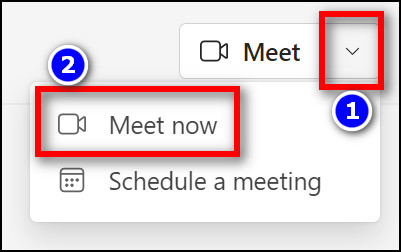
- Type the meeting’s name in the box below Choose your audio and video settings for or leave it as it is.
- Turn on the Camera toggle to enable the laptop camera/webcam.
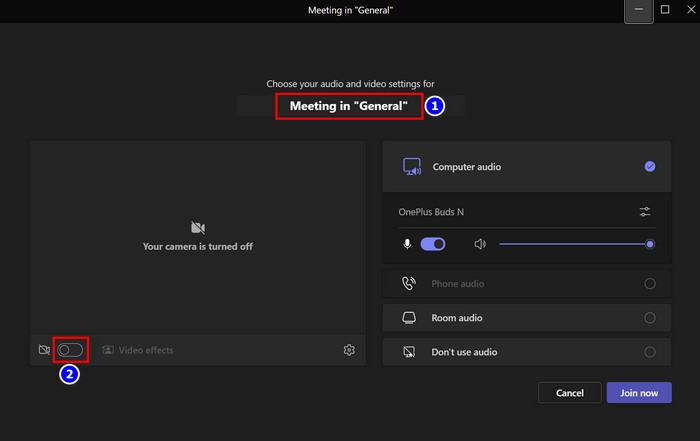
- Customize the audio input settings from the right side. These audio options are self-explanatory.
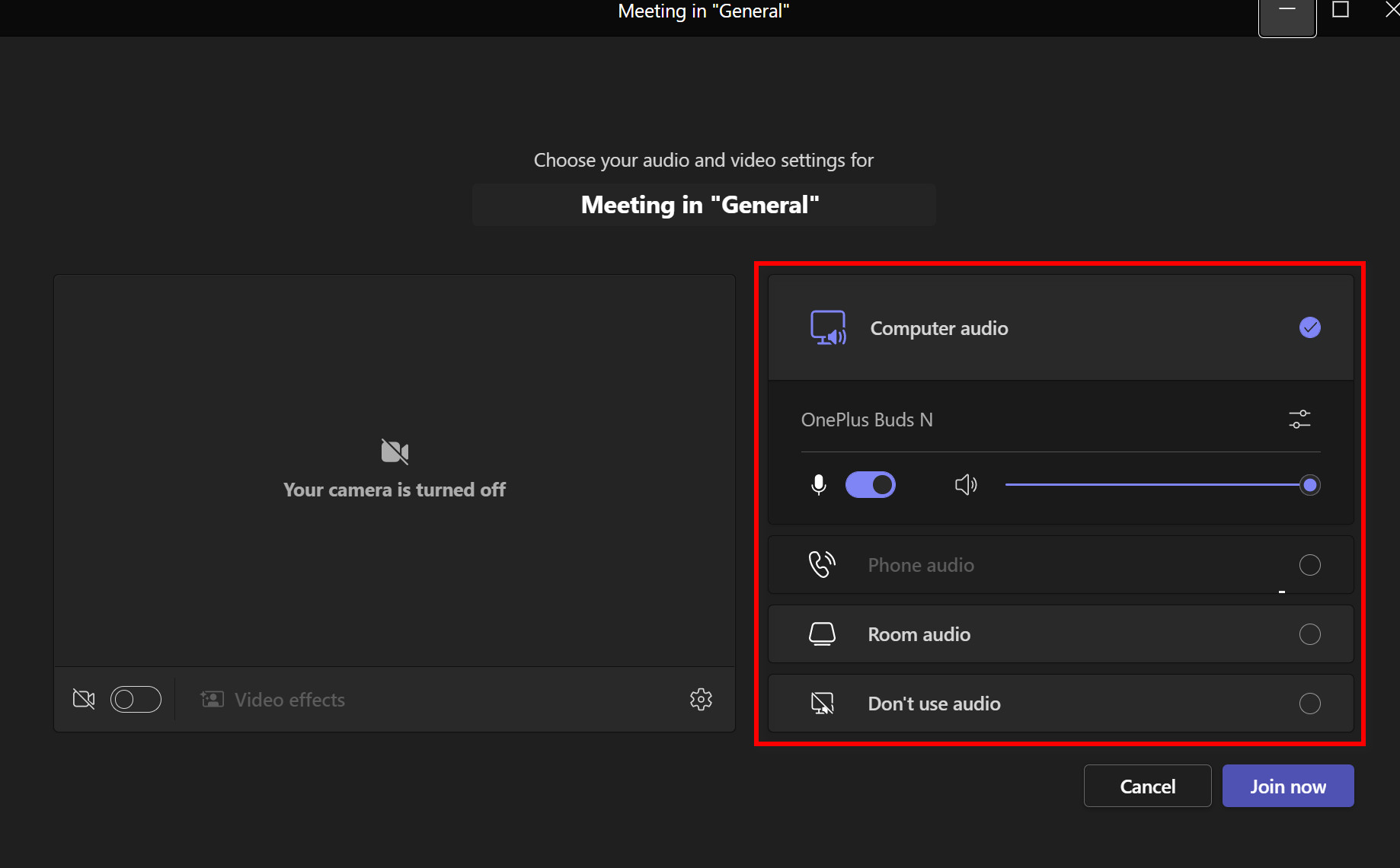
- Click on the Open device settings icon for extended customization.
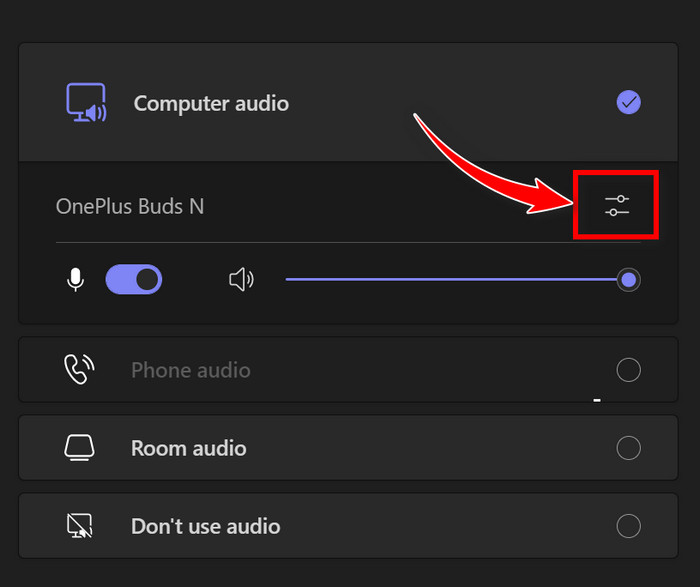
- After you’ve finalized the options and filled in the necessary boxes, click on Join now to start the meeting.
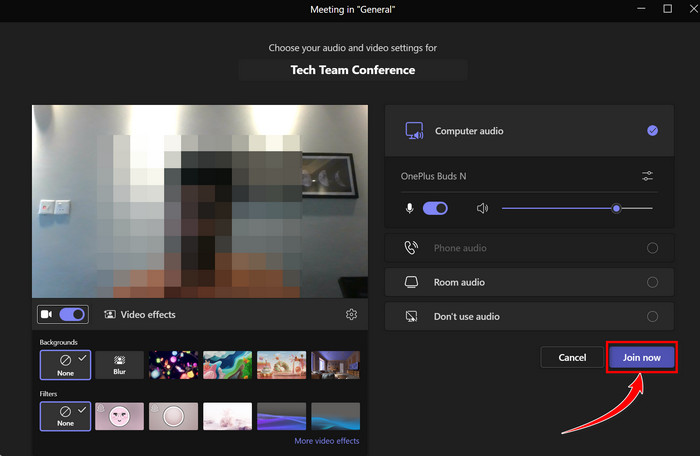
- Select Copy meeting link or Add participants to invite people to the ongoing video conference.

- In case you choose Schedule a meeting:
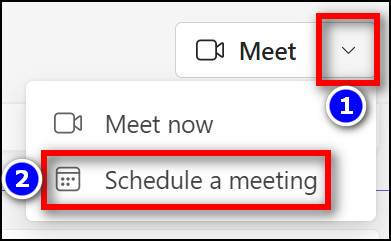
- Write the meeting’s name in the Add title box.
- Type the names of the required attendees in the Add required attendees box.
- Set the meeting duration and choose the starting and ending date & time from their respective sections.
- Click on the drop-down menu for the Repeat section and select your preferred option. In case you don’t want to repeat the meeting, leave the option as it is.
- Input a description of the conference in the Type details for this new meeting box.
- Further customization can be done from the top navigation bar, where you’ll find the options to change the Time zone or the Response options.
- After you’ve finalized the options, click on Send to schedule the meeting. The group members should receive an alert message for the scheduled conference.
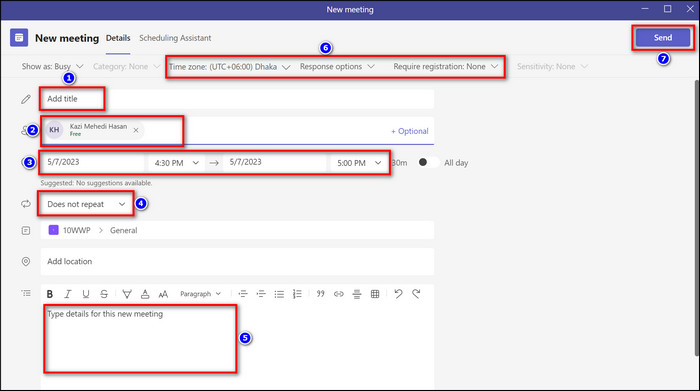
- Click on the meeting from the message to see the meeting details.
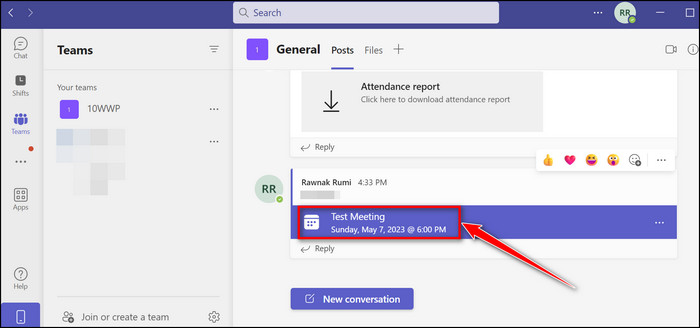
- Select Copy link to copy the link of the meeting and share it with attendees outside of the organization/group.
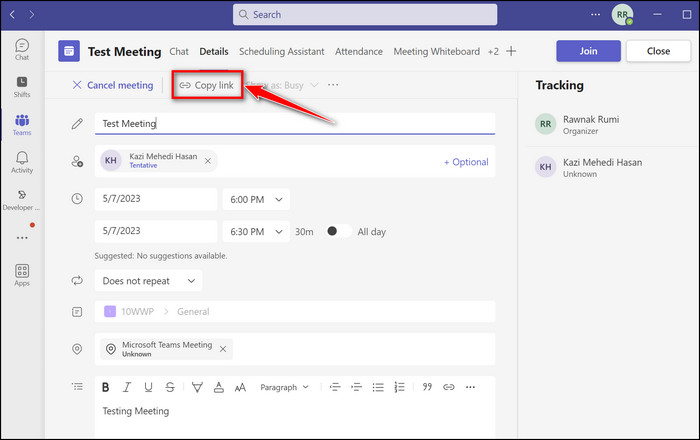
- Select Cancel meeting in case you want to delete the scheduled conference.
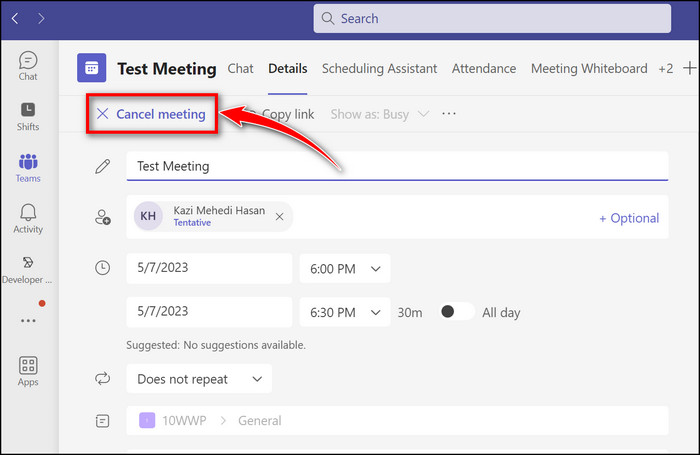
Keep in mind that the attendees who are not a member of your group/organization will only be able to join the conference as guests.
How to Join a Meeting in Microsoft Teams
Now that you know how you can start a meeting/conference, let’s see how you can join an ongoing meeting in Microsoft Teams:
From the Notification Alert
Once the meeting host sends you a joining request, you’ll get a notification alert on your app or web version. Click on Accept and customize the meeting preferences such as webcam, audio input, virtual backgrounds, etc.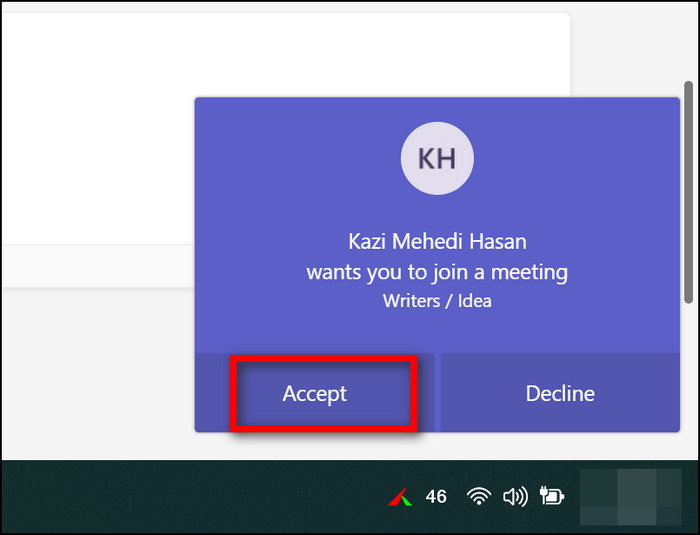
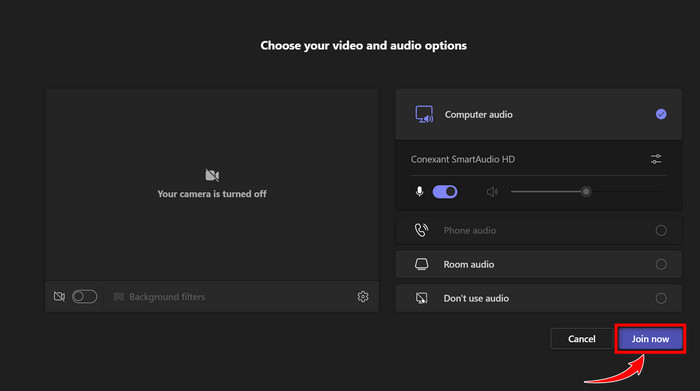
When you’ve finalized the settings, hit Join now to join the meeting/conference. You can also customize the said settings while you’re in the meeting. Click on Leave to leave the conference.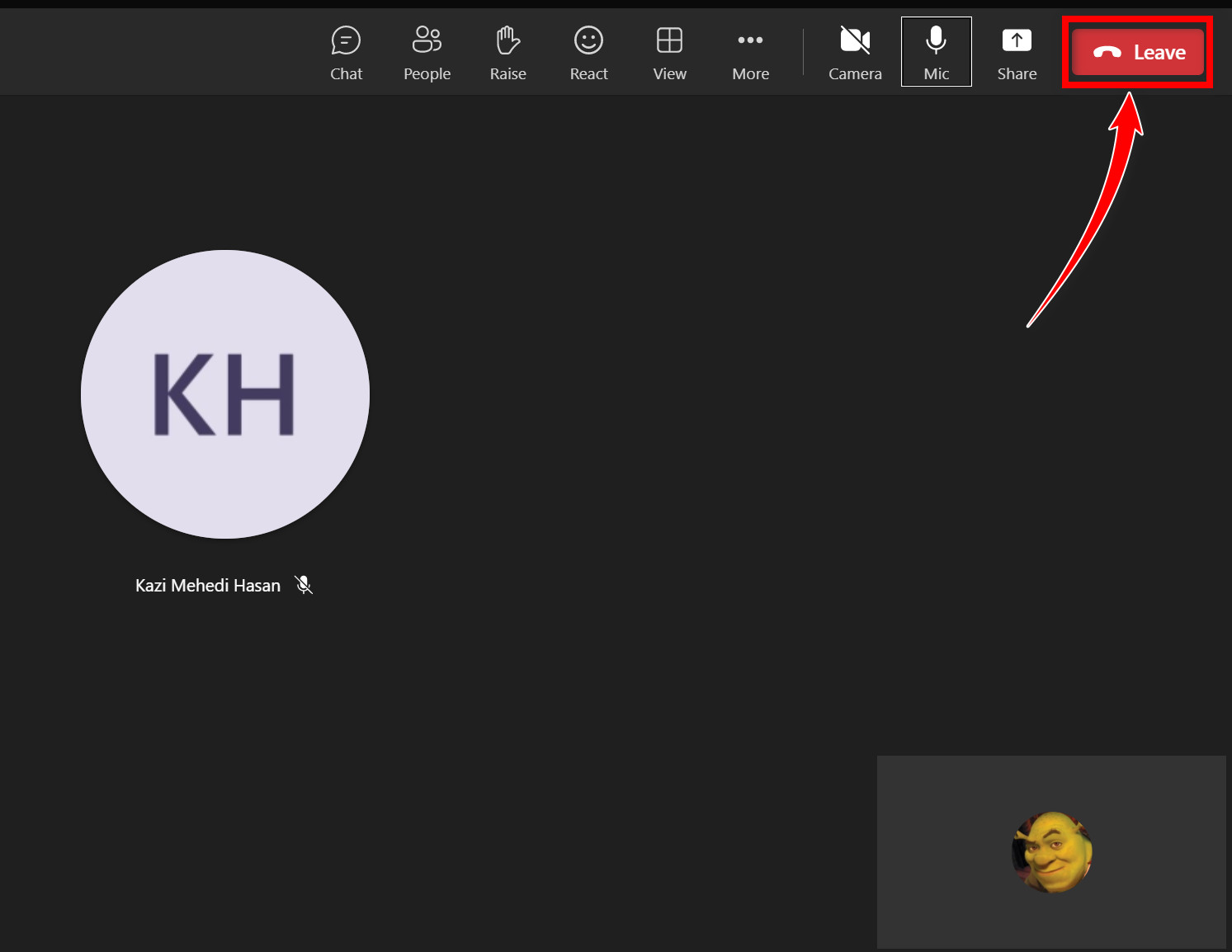
From Messages(for Scheduled Meetings)
Go to the group/channel where the meeting has been scheduled and locate the alert message for the scheduled meeting. When the meeting time has started, click on the meeting and hit Join.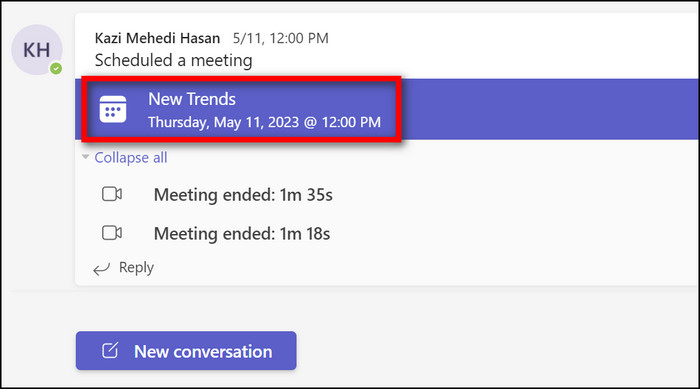
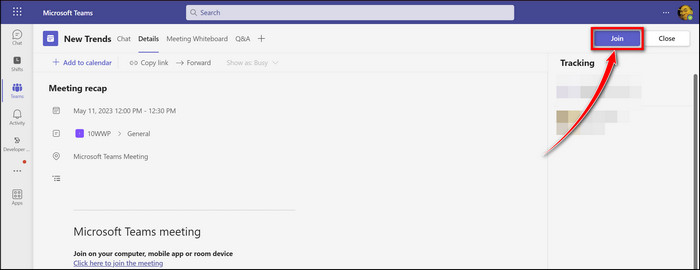
Customize the camera and audio settings according to your preference, and click on Join now to join the conference. After the conference is over, hit Leave.
From Calendar(for Scheduled Meetings)
Launch the Teams app and select Calendar from the left side pane. Go to the date when the meeting has been scheduled and locate the meeting you want to join. Now click on Join and customize the camera and audio inputs before joining the meeting.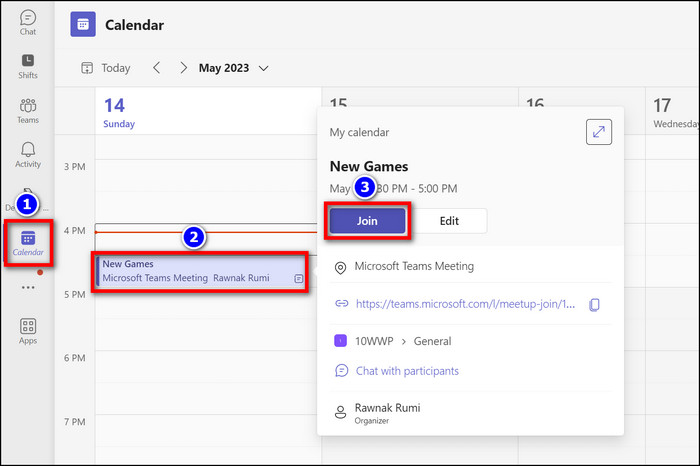
Then hit Join now to attend the meeting, and when you’re done, click on Leave to leave the meeting.
How to Use VOIP Call on Microsoft Teams
Using the VOIP call feature on MS Teams is the most straightforward way to start an audio conference with your team members/colleagues. You make a VOIP call on Teams from both desktop and mobile app. It’s also available on Teams web.
Here are the steps to use MS Teams for audio conferencing:
- Open the Teams app on your PC or go to teams.microsoft.com and sign in with your Teams account.
- Select Chat from the left side pane and click on the New Chat icon.
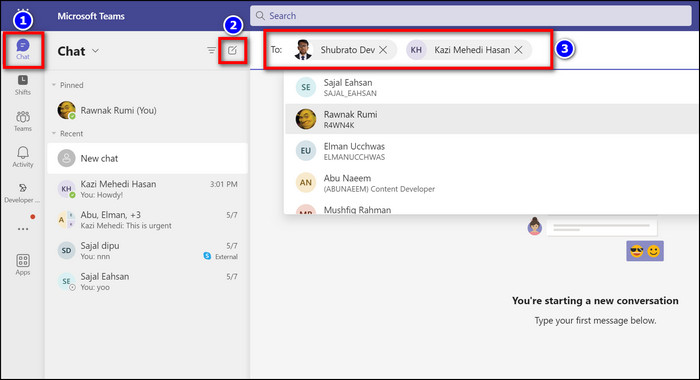
- Type the name or mail address of the participants and choose the correct accounts from the search result.
- Hit Enter.
- Click on the Audio call icon from the top right corner.
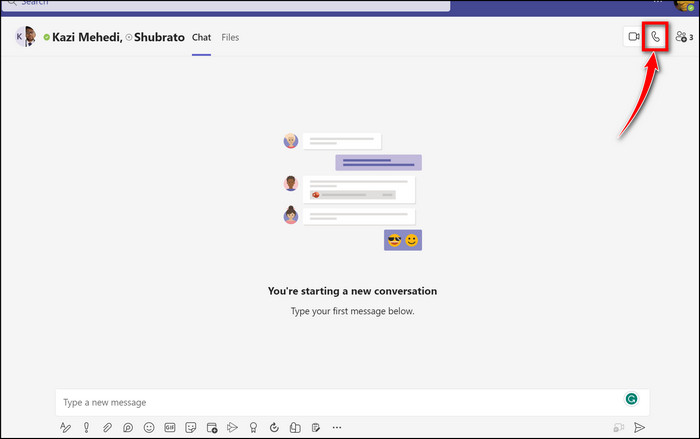
- Select People from the top bar if you want to add more participants to the audio meeting.
- Click on the drop-down menu for Leave and select End meeting when the conference is over.
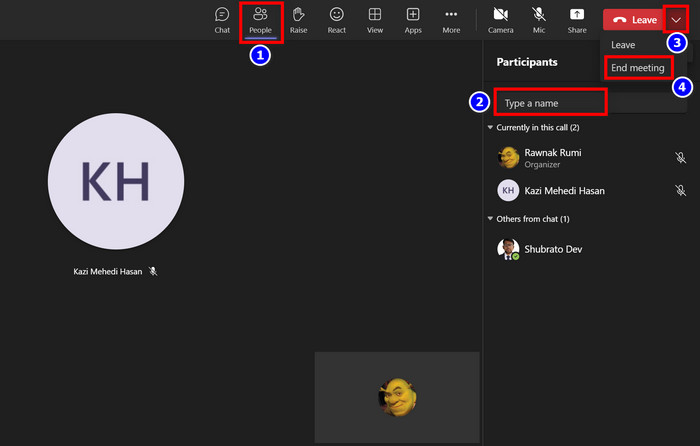
This method is applicable for both free and paid Teams users. Teams mobile users can also join the VOIP group call. Furthermore, you can start a VOIP call with an existing chat or Teams contact.
How to Use Whiteboard During Meetings in Microsoft Teams
The ability to draw or sketch out ideas is really important for remote meetings as it helps retain the communication, brainstorming, and presentation potential of an in-person meeting. Hence Microsoft Teams’ implementation of Whiteboard.
It’s basically a digital whiteboard that does exactly what the name suggests. You can draw anything, text/note anything, or even add images, videos, documents, and links to convey an idea to the entire team of participants in real-time. Let’s see how you can use this feature:
- Start an audio/video meeting with your required attendees.
- Click on Share from the top bar and choose Microsoft Whiteboard from the drop-down options.
- Select +New Whiteboard and click on the Create or Inking icon to start demonstrating.
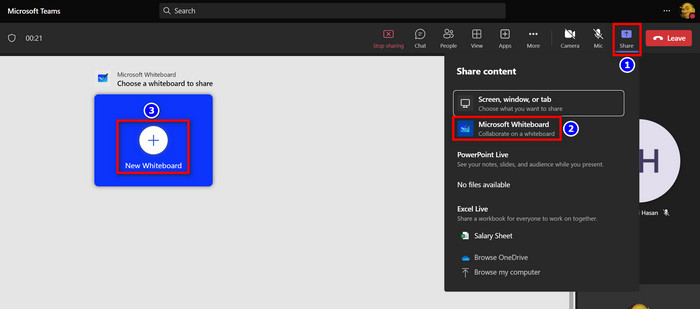
If you want to create another Whiteboard, click on the Home icon to go to the Whiteboard gallery and select +New Whiteboard again. You can also delete the previously created Whiteboard from there. After you’re done, click on Stop Sharing to close the Whiteboard.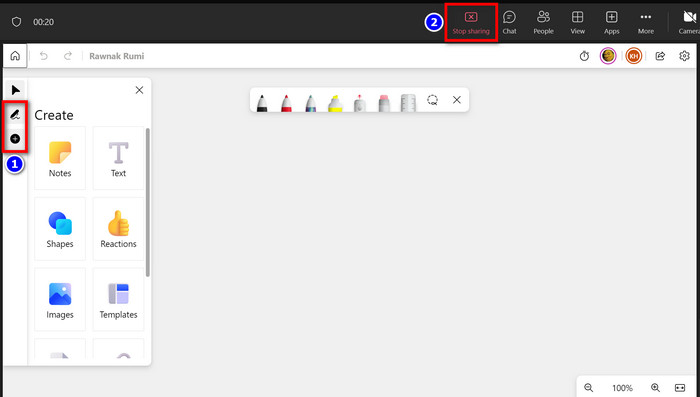
How to Use Custom Background in Teams Meetings
If you’re feeling a little awkward about your background when you’re about to join a Teams meeting, don’t worry. You can set a virtual background to hide what’s going on behind you during a video conference.
Here’s how you can use a virtual background in a Teams meeting:
Change the Background Before a Meeting Starts
- Launch the Teams app on your PC or go to teams.microsoft.com.
- Click on Teams > Meet.
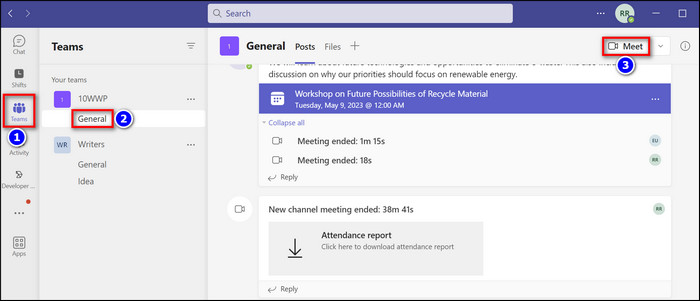
- In case you’re using the Teams app:
- Enable the Camera toggle and select Video effects.
- Choose a background or click on More video effects from the bottom.
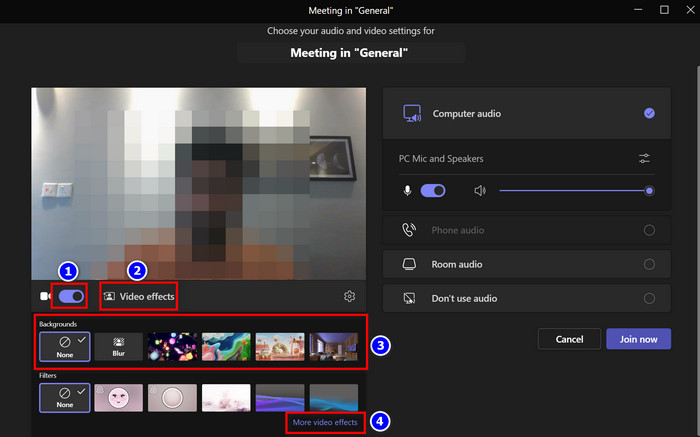
- Click on Show all from the right side pane’s Backgrounds section.
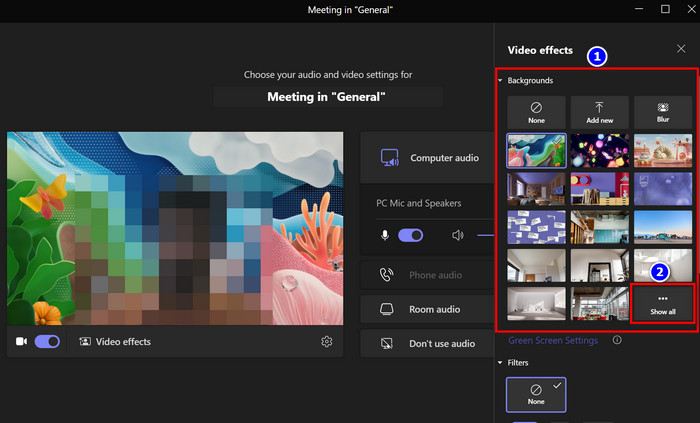
- Select any of the preset backgrounds or upload your own background by clicking on Add new.
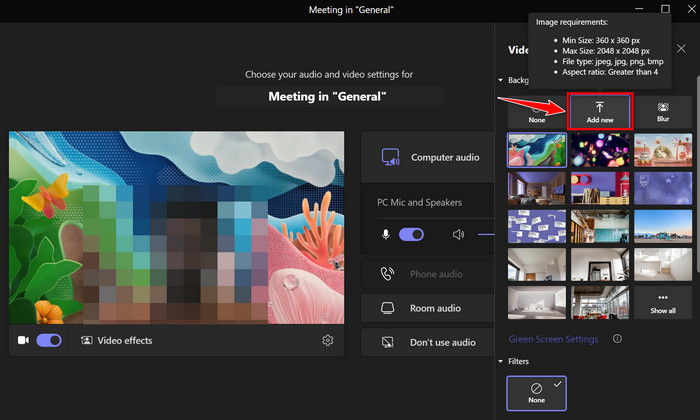
- In case you’re using Teams web:
- Turn on the camera toggle and click on Background filters.
- Select any of the preset backgrounds from the Background settings.
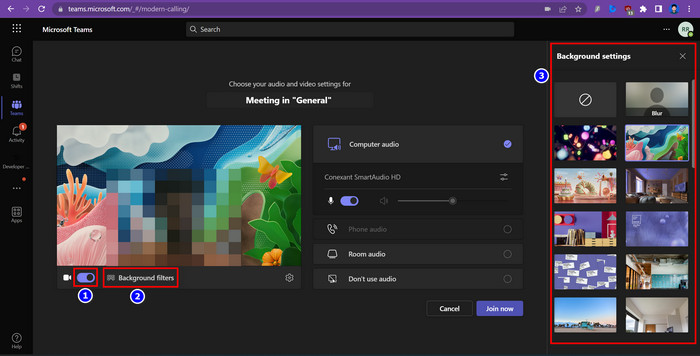
Change the Background During a Meeting
- During a meeting, select More(…) > Video effects(for Teams app) or Background effects(for Teams web) from the top navigation bar.
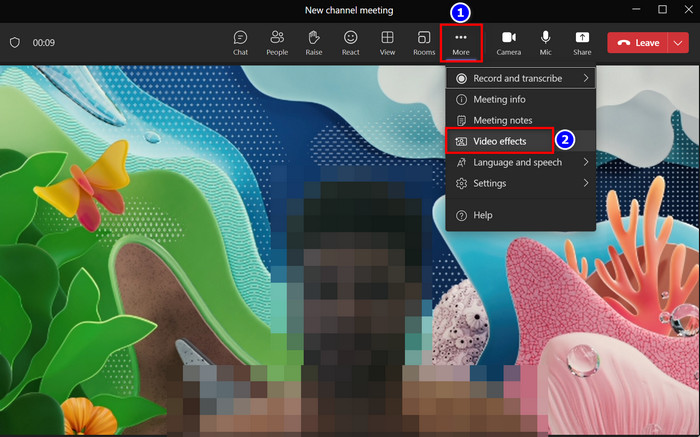
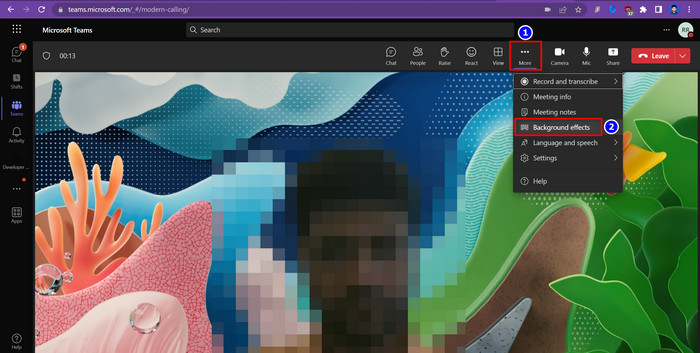
- Select any of the preset backgrounds from the Backgrounds section or click on Add new to set your own custom background.
- Hit Preview to check how your chosen background looks.
- Click on Apply.
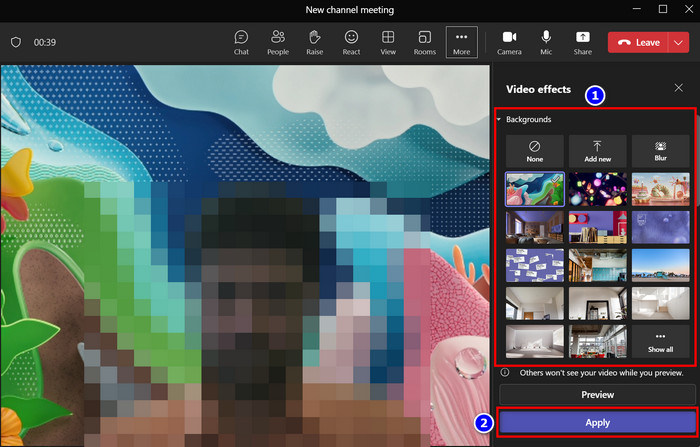
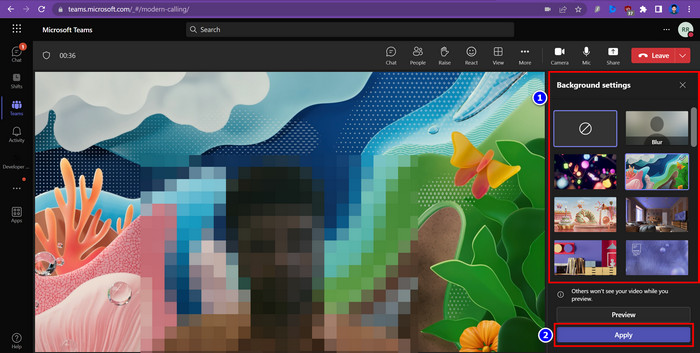
For mobile users, tap on Change background before joining the meeting and select a custom background from the presets. If you want to change the background while you’re in a meeting, tap on the three-dot icon and select Change background.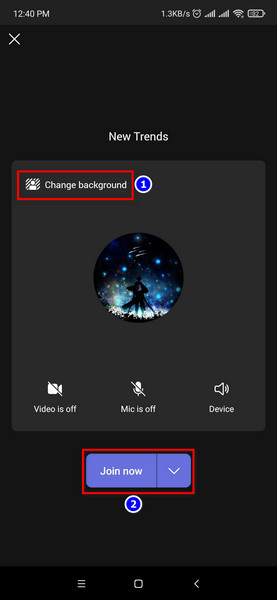
Then select any of the preset backgrounds to check how the background looks and tap on the back icon. The virtual background will be applied.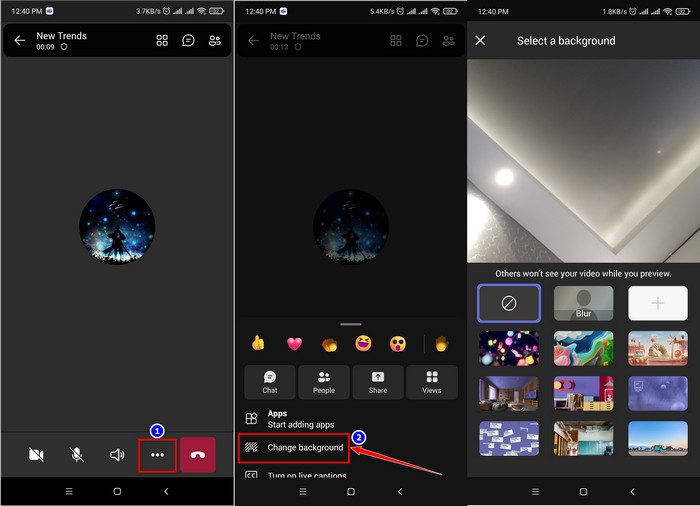
How to Use Two Microsoft Teams on One Laptop
Businessmen, company owners, or even office employees might need to use more than one Microsoft Teams account on one device. Switching from a professional to a personal account or using multiple Teams accounts simultaneously is pretty easy. Here’s how to do it:
- Launch the Teams app on your PC or go to Teams on the web.
- Click on your profile picture from the top right corner.
- Select Teams for personal use.
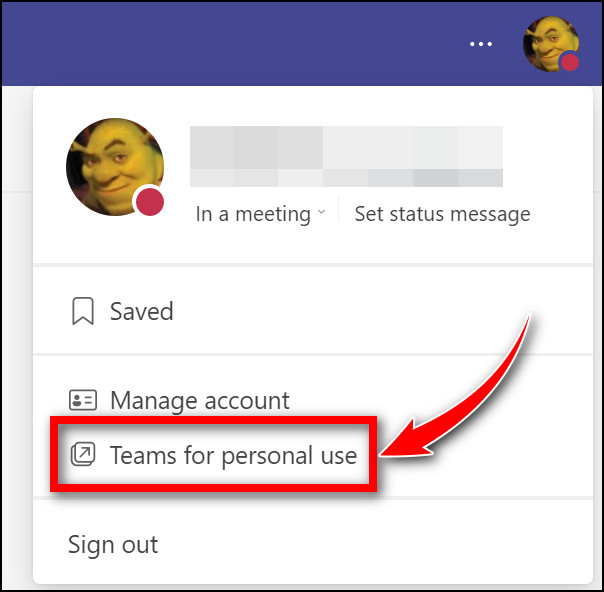
- Sign in with your personal Microsoft account.
In case you want to use two Teams accounts simultaneously, the best way to do so is to use the Teams desktop app for one account and Teams on the web with another.
How to Use Microsoft Apps on Teams
Since Teams is one of the services within the Microsoft ecosystem, its users are able to enjoy seamless integration with all the other Microsoft services such as PowerPoint, Word, Excel, Stream, etc.
Not only that, Teams also has robust integration with 3rd party services like YouTube, Polly, Jira Cloud, Kahoot!, etc.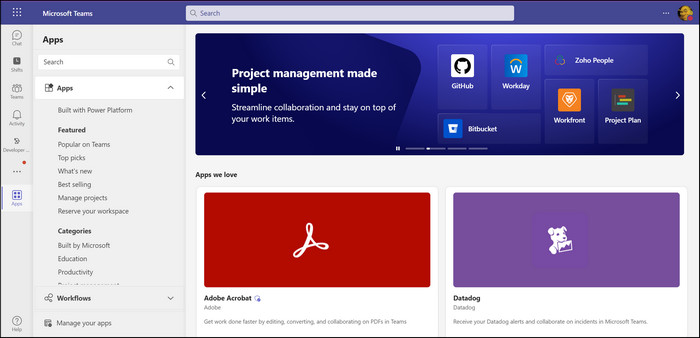
Whether you’re using the Teams app or Teams on the web, you can utilize these apps on your Teams account by simply selecting the Apps section from the left side pane and choosing your preferred app.
For convenience, let’s demonstrate the integration and usage of a Microsoft app on Teams:
- Open a chat or a group conversation on your Teams account.
- Click on the More apps icon(three dots) located below the Type a new message box.
- Search for the Microsoft app that you want to use. Let’s use Microsoft Forms as an example.
- Click on Add.
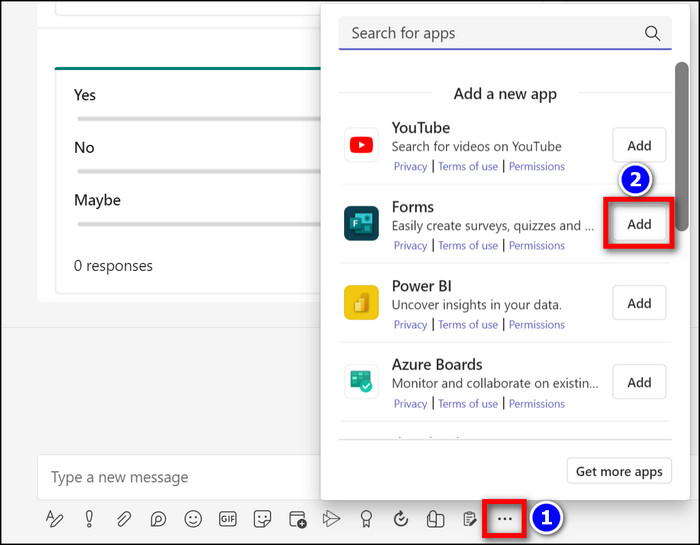
- Set the question, choosable answers, and customize other options according to your preference.
- Hit Preview.
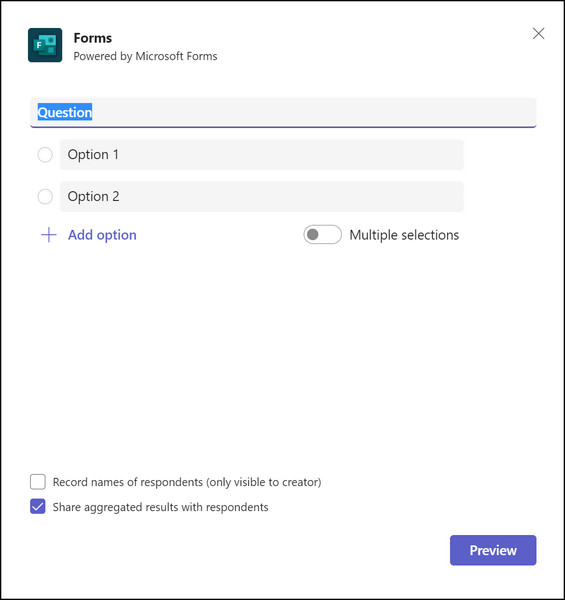
- Click on Send if you’re pleased with the preview. Otherwise, select Edit to further customize the poll card.
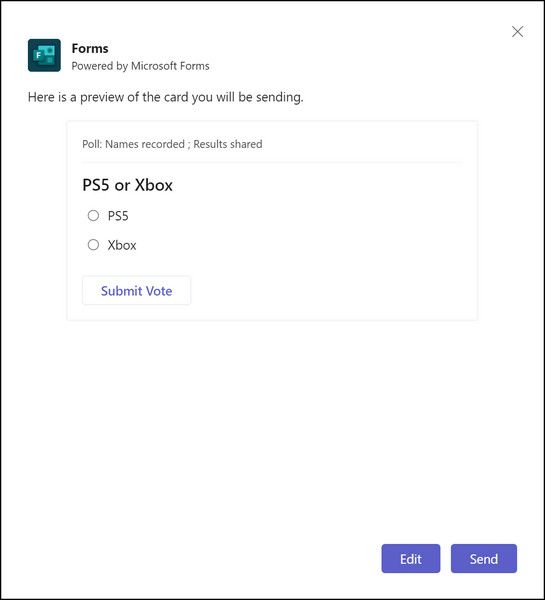
Done! The poll will be sent to the recipient(s). You can even furthermore customize the poll by selecting the three-dot icon > More actions and choosing subsequent options from other integrated apps.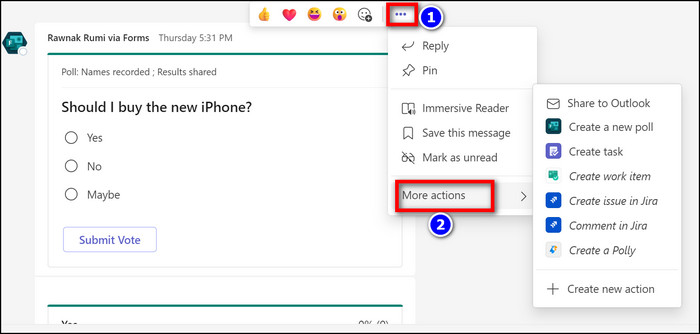
Frequently Asked Questions
Do I need to download Teams to join a meeting?
It’s not mandatory to download the Teams app, as you can use the Teams web on your browser to join a meeting. That being said, app users will have a much better user experience than the Teams web users.
Are Microsoft Teams free?
Yes. Microsoft Teams is free to use for both work and personal use. But the features will be limited compared to a paid subscription user. Furthermore, admins of organizations will have higher authority and more features compared to team members.
How much does it cost to use Microsoft Teams?
Microsoft Teams is free to use. But to get the full experience, you need to have an Office 365 account, which costs anywhere from 5$ to 36$ per month, depending on what subscription plan you choose.
Final Thoughts
Whether you want to use Microsoft Teams for your personal needs or business/organization, this article provides all the essential use cases that you might require to perform. Furthermore, it’s also a user guide for both free and paid Teams users.
That’s all for today. In case you still have any questions lingering in your mind about MS Teams, feel free to share your thoughts in the comments below.
Have a good day!

